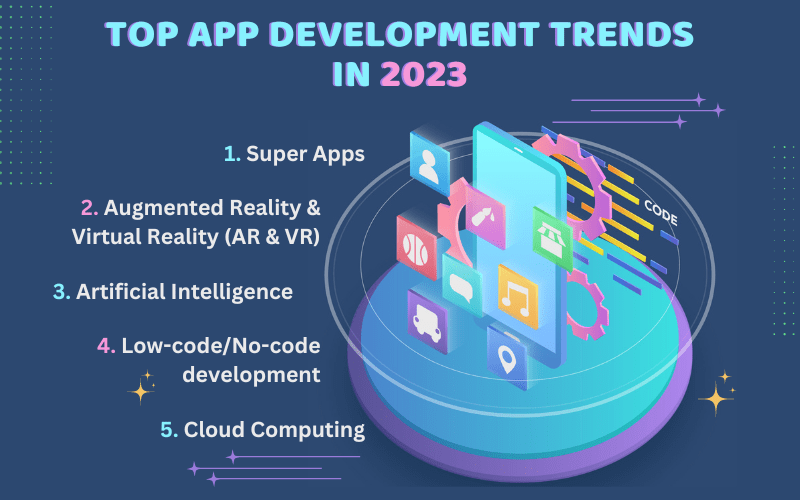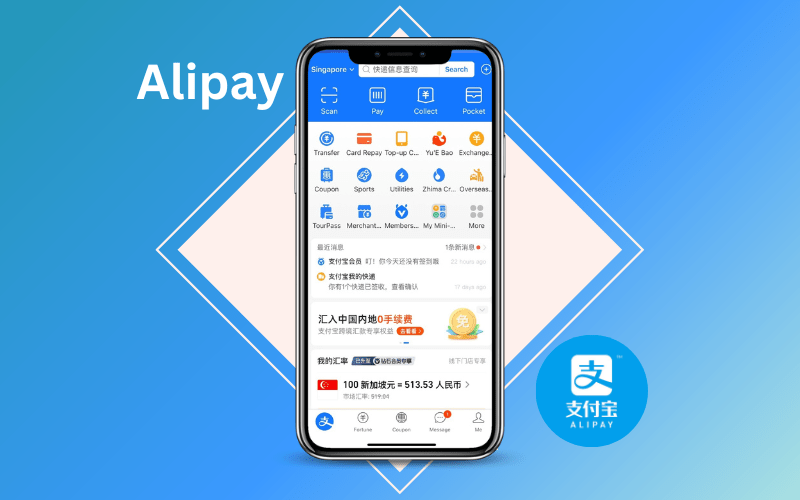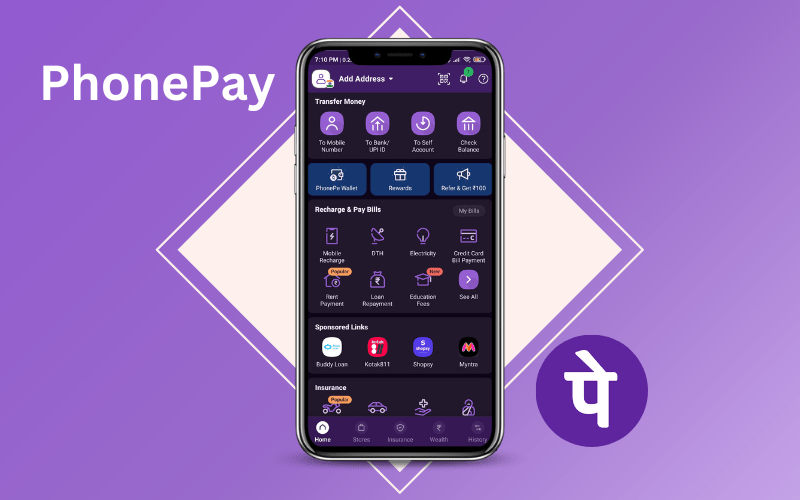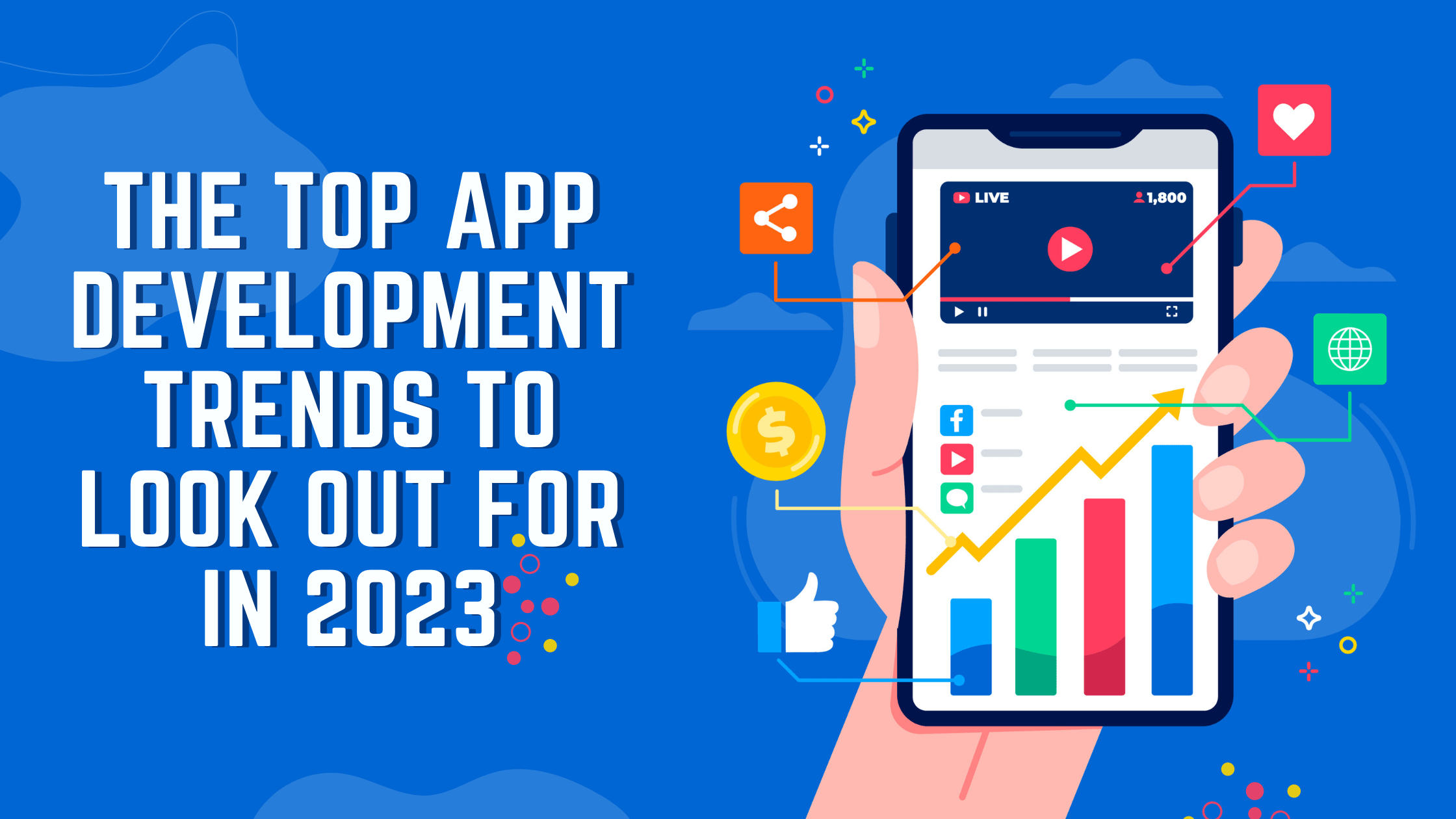Create your 1st app with Swing2App no-code builder and be part of top app development trends.
The mobile app development industry is rapidly evolving and getting more efficient as new technologies and app development trends emerge. Staying up to date with the latest app development trends is essential for businesses to create innovative, user-friendly, and successful apps.
But why should I care about the changing app industry?
According to the reports published by Statista, the expected revenue from the mobile apps industry is to grow at a rate of 9.27% from 2022 to 2026, with a projected market value of 614.40 billion U.S.D by 2026.
In this blog post, we’ll go through the top five mobile app development trends for 2023 and how your company can take advantage of them to stay relevant. In addition, we’ll offer advice on how to select the best app development business to assist you get around these constantly evolving app development trends.
TOP APP DEVELOPMENT TRENDS IN 2023

1. SUPER APPS
The super app was coined in 2010 by BlackBerry founder Mike Laraidis: “Super Apps are the kinds of apps that people love, that they use every day because they offer such a seamless, integrated, contextualized and efficient experience.”
Super apps aren’t limited to being a one-stop platform composed of multiple services on a single app. They also function as a frontend app platform where internal developers and third-party providers can publish micro-apps, and users can activate micro-apps. This helps users to save a lot of space in their devices, as a single super app caters to a lot of user needs.
China has developed super app ecosystems for many years. WeChat is the most popular one, with a user base of almost 90% of China’s population, 3.5 million micro-apps on its platform, and features for almost all facets of daily life. Super applications are also growing more and more popular in other developing nations. Here are a few examples:
1.ALIPAY

Alipay (founded by Jack Ma) has a huge customer base who trust the company’s super app services. This single super has multiple features where users can send, receive, and spend money, manage their finances, choose an insurance scheme, hire a cab, and even order food from restaurants.
2.PHONEPE

One of the most well-known super apps in India is PhonePe. It is the fastest and safest UPI (Unified Payment Interface) app, as evident by its huge and loyal user base. With PhonePe users can order food and clothing or even recharge their phones through sponsored links, pay for any kind of insurance as well as buy OTT subscriptions. PhonePe offers instant messaging for its users to communicate with one another without linking with any social media apps.
These are some well-established super apps in the market, but there are many opportunities in this field and the app development trend of Super apps is going to increase. As per a report, the global super apps market size is expected to grow at a CAGR of 27.8% from 2023 to 2030.
2.Augmented Reality & Virtual Reality (AR & VR)
With its immersive and engaging experiences, AR and VR technologies continue set trends in app development industry. We can foresee more companies incorporating augmented reality (AR) and virtual reality (VR) into their mobile apps in 2023 to engage users and offer distinctive experiences.
Mobile apps may use AR and VR in the following ways:
Gaming: AR and VR technology can improve mobile gaming, enhancing the immersive and engaging nature of games.
Retail & eCommerce: Using AR apps, customers can digitally “try on” things like makeup or a dress or visualise how furniture would look in their homes, improving the shopping experience and boosting up their sales. With the help of augmented reality, Sephora and L’Oreal have created virtual fitting rooms on their applications so that users may choose what will work best for them.
Education and training: Virtual reality (VR) learning apps will provide immersive, practical training experiences, enhancing retention as well as engagement.
Medical professionals have benefited from AR-based apps like AccuVein and Saagra, which have helped with disease detection and given them essential information during operations.
These innovations are just begging, the app development trend of using AR/VR in apps is going to increase further. So, it is better to start learning about this latest app development trend to take your business to the next level.
3. Artificial Intelligence
In terms of mobile apps, AI has only so far been utilised in chatbots, virtual assistants, and photo editors. However, the app development trend of using AI in mobile applications is projected to rise by 2023.
First off, it can streamline the creation of mobile apps themselves!
It can build a mobile app without instructions if given information about a prior mobile app development process. AI integrations can assist in real-time problem solving if the app ever encounters any issues.
Second, AI can mimic user behaviour by following to established patterns. For instance, when you buy a camera from Amazon you tend to get recommendations like: camera carrier, tripod stand, studio lights (which might be the next thing you want to buy. But how does Amazon know what you want next? Simple answer is AI: Amazon curates your recommendations using artificial intelligence. The application saves all information about your purchases, and the next time you use it, it directs you to web pages featuring recommendations.
Similarly, other apps can also use AI for various uses like translation, facial recognition(used in makeup apps), Adaptive battery, etc.
AI may be used to schedule meetings, organise a user’s photos as per the person in the picture, and automate other operations to make apps more effective. In addition, workers in the creative industries are already benefiting from machine learning and natural language processing models (like ChatGPT) that enable human-to-computer communication.
4.Cloud Computing
One of the best technologies to effectively utilise while creating mobile apps is cloud computing. There is no longer a need to create apps for numerous platforms and devices. Web browsers can be used to run cloud computing applications, and they are perfectly compatible with different platforms. No additional space is used to store data on the smartphone since everything is accessible online and stored on a server.
The development and launch of apps have been completely transformed by cloud technology, and this app development trend will continue beyond 2023. The application of cloud-based services enhances mobile app development’s adaptability, scalability, and privacy. As a result, app developers can create and distribute their apps more quickly and easily, and users can access their data and app functionality on any device. For instance, a cloud-based app might let users to manage their finances and access account information from their smartphone, tablet, or desktop. All of the information and important data are kept on the server and are always available. The risk of data loss due to an app crash is rare as the server operates the application on its own.
5.Low-code/No-code development
No code and low code development tools have transformed the way individuals, companies, and agencies build apps to overcome traditional coding limitations.
When we talk about app development the first thing that comes to our mind is the endless lines of code. Businesses often hire agencies and developers to develop and manage their websites, apps, and other online domains, which is time-consuming and a costly affair.
Low-code and no-code software development technologies have emerged as feasible and practical alternatives to the traditional development method to address these difficulties. Coding is no longer the huge obstacle it once was. There are numerous no-code platforms that reduce or eliminate the technical aspects of coding.
You no longer need to be an expert in technology, learn how to code, or have a huge budget to build your own app or web app and join the app development trend. Not only the eCommerce industry continues to focus on mobile apps. Businesses that manage workforces, offer services, or even create communities have shifted their focus to apps.
All you need to build and launch your app quickly is an innovative idea and some user-friendly no-code tools with features like pre-built templates, pre-built menus, and simple APIs. The simplest and quickest approach for entrepreneurs and small businesses to launch their app without the difficulty of learning to code or the high expense of hiring an app development team is through no-code/low-code. With no-code tools like Swing2App no-code app builder, it is also feasible to add special customization that reflects your brand clearly through your app aligns the app and also satisfies your customers’ needs. To help you launch your app within few weeks, Swing2App no-code app builder offers one-stop app development solution that include web apps, iOS & Android apps, and even the post app development support.
Conclusion
The total number of apps in the Apple Store and Google Play Store at the end of 2022 was over 5.2 million. The easiest approach to stand out in such a crowded and competitive industry is to make sure your app accurately portrays your unique offerings and products while also meeting your consumers’ user expectations. Customising your app, making it user-friendly, staying up-to-date with mobile app development trends, and bugs, errors free app are all essential for success, and fortunately, Swing2App no-code app builder can handle all of these!
Check out Swing2App no-code app builder and see how it can benefit you in 2023.
